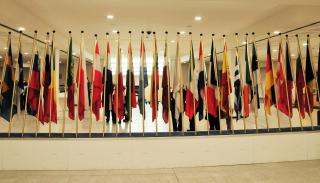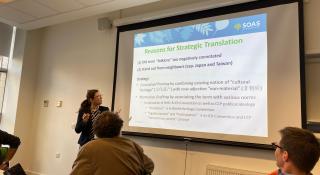
Breadcrumbs navigation
The International Studies Conference, peaceful change, and the transformation of international studies in the United States during the prewar and wartime years
In this short video extract, Talbot Imlay discusses the key arguments from his new Review of International Studies article - The International Studies Conference, peaceful change, and the transformation of international studies in the United States during the prewar and wartime years
Want to know more? You can read the full article at DOI: https://doi.org/10.1017/S0260210525000221
This particular article is open access, however BISA members receive access to RIS (and to our other journal European Journal of International Security) as a benefit of membership. To gain access, log in to your BISA account and scroll down to the 'Membership benefits' section. If you're not yet a member join today.
Abstract
This article examines the relationship between the International Studies Conference (ISC), the question of peaceful change, and the study of international relations (IR) in the United States. It argues that the prewar and wartime years constituted a pivotal moment in the disciplinary history of American International Relations, particularly in terms of the transformation of the field from prewar international studies into postwar IR; and that the ISC and its American committee offer a valuable vantage point for observing the dynamics and stakes involved in this transformation. The growing urgency of peaceful change during the 1930s imbued the ISC and its American committee with unprecedented significance for U.S. scholars in the field, promoting in the process a framework for international studies that favoured international and interdisciplinary collaboration as well as multi-conceptual perspectives. Disappointment with the results of ISC deliberations on peaceful change, however, undermined the ISC-associated framework, boosting in the process another framework centred in and on the United States as well as on ‘power politics’. The growing ascendency of this second framework would mark IR in the United States, providing fertile terrain for the postwar emergence of realism.
Photo by Thomas Lohmann on Unsplash


